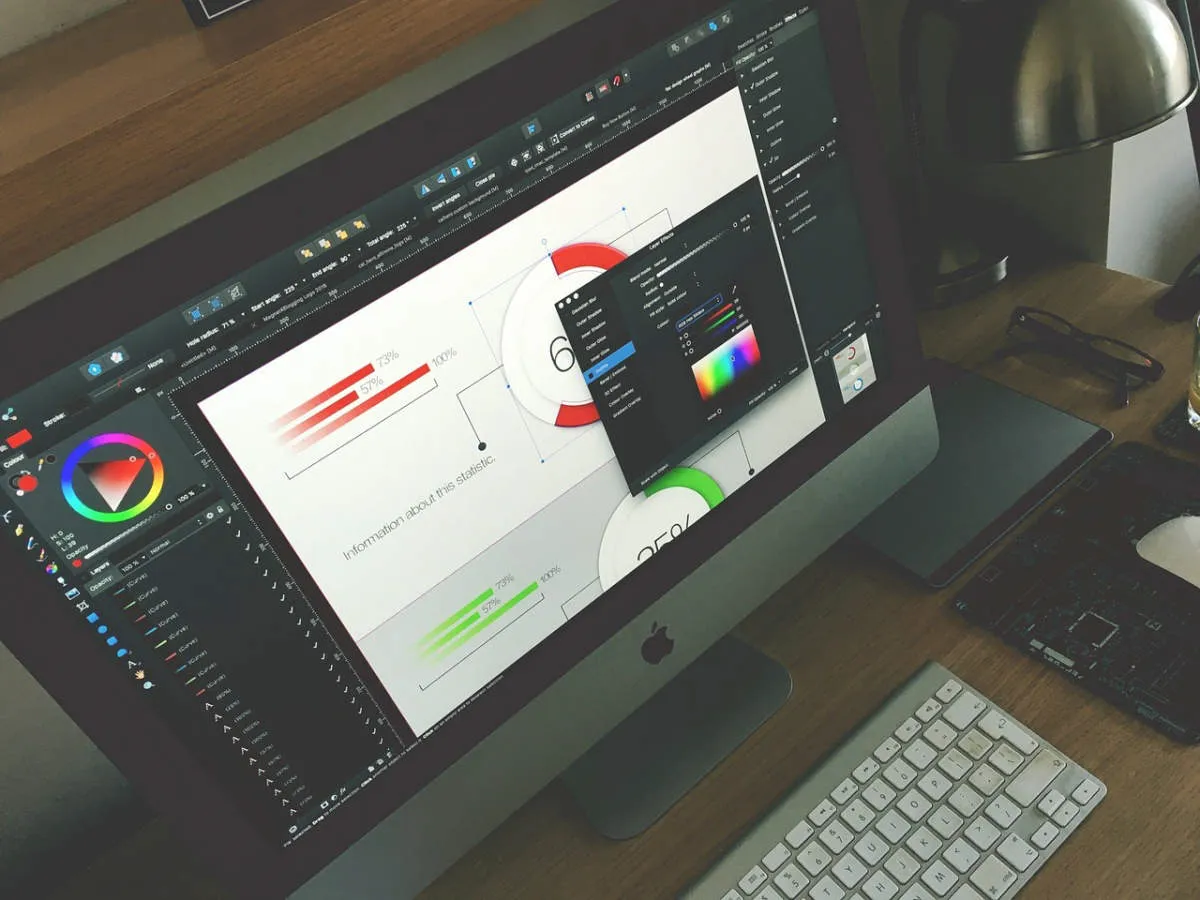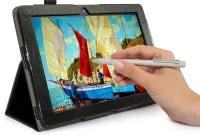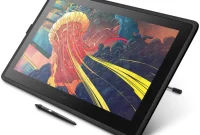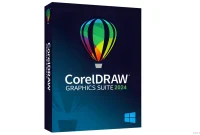Explore the top 10 graphic design software tools tailored for professional creatives, offering versatility, innovative features, and seamless user experiences to elevate your design projects.
Adobe Photoshop CC
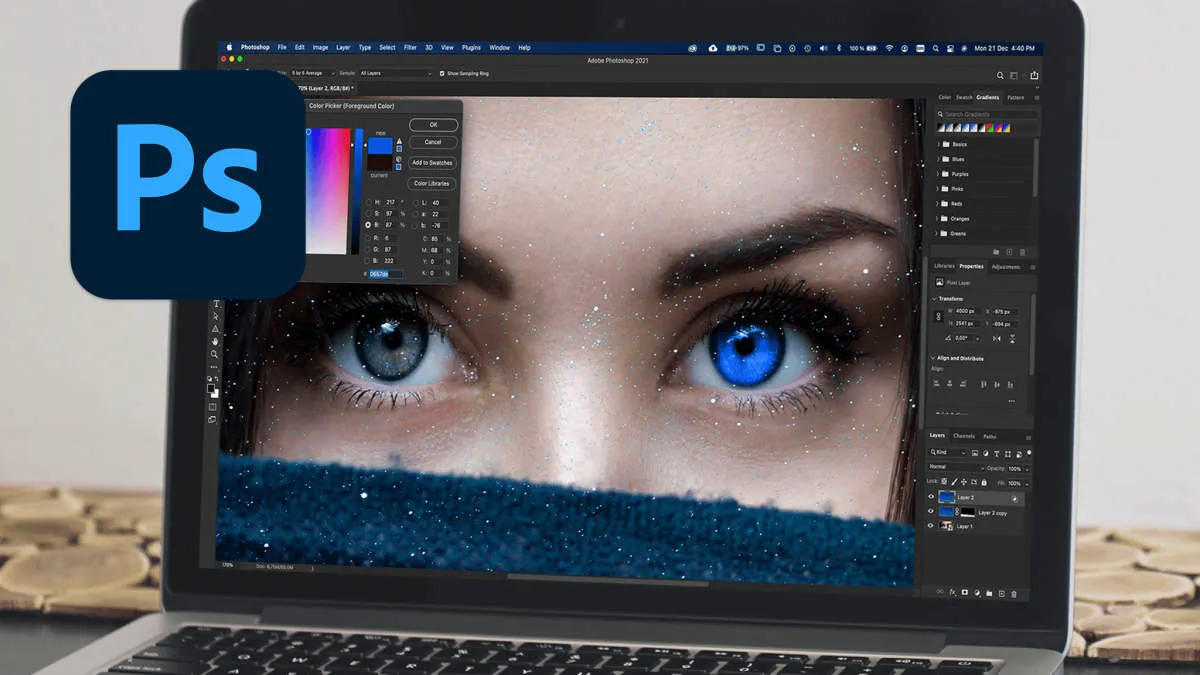
When it comes to professional raster image editing and manipulation, Adobe Photoshop CC reigns supreme. A staple in the industry, Photoshop offers an unparalleled suite of tools for photo editing, digital painting, compositing, and graphic design.
Key Features:
- Layers and Masks: Work non-destructively with powerful layering and masking options for precise editing and compositing.
- Extensive Toolset: Access a comprehensive collection of brushes, selection tools, filters, and adjustment layers for limitless creative possibilities.
- Adobe Camera Raw: Edit RAW and JPEG images with advanced controls for exposure, color, and lens corrections.
- Content-Aware Fill and Healing Brush: Remove unwanted objects and imperfections seamlessly with intelligent content-aware technology.
- Typography and Text Effects: Create stunning typographic designs with advanced text tools, styles, and effects.
Pros:
- Industry-standard software with a vast community and extensive learning resources.
- Unmatched power and flexibility for a wide range of creative projects.
- Seamless integration with other Adobe Creative Cloud applications.
Cons:
- Subscription-based model can be expensive for some users.
- Steep learning curve for beginners.
Corel Painter
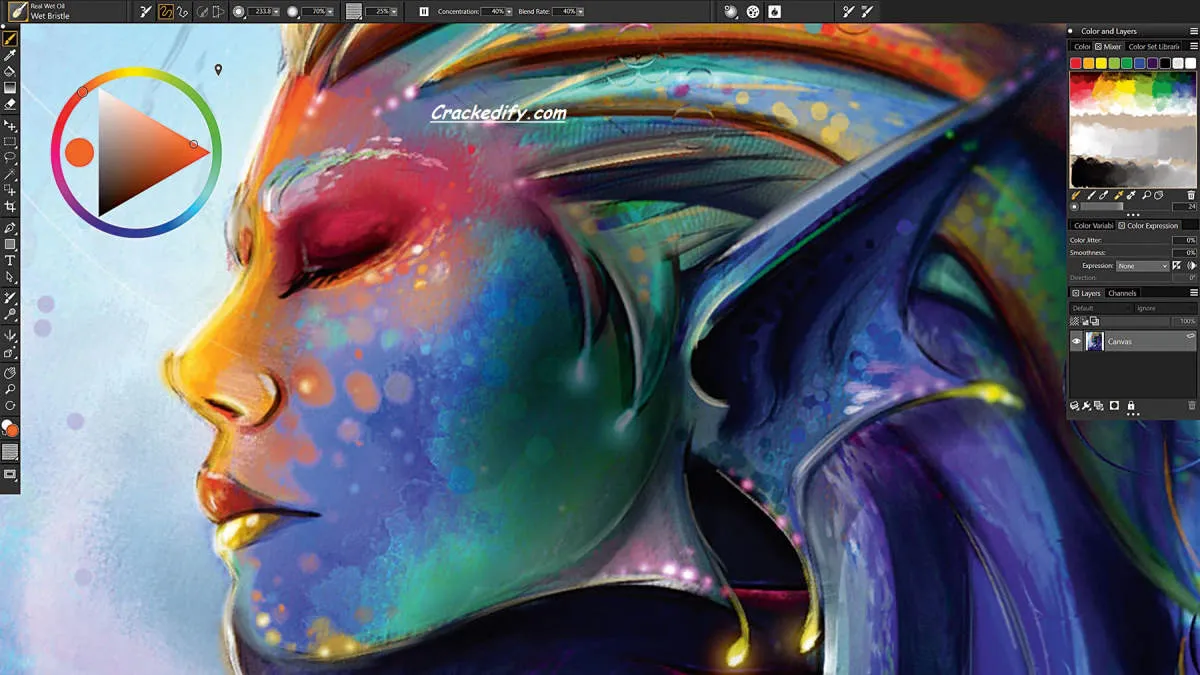
Corel Painter has long been a powerhouse in the digital art world, renowned for its realistic imitation of traditional media. It’s a favorite among illustrators, concept artists, and digital painters seeking a natural and intuitive creative process.
Key Features of Corel Painter:
- Vast Brush Library: Painter boasts an extensive collection of brushes, mimicking everything from oils and watercolors to pencils and charcoals. These brushes offer impressive fidelity to their real-world counterparts.
- Natural Media Simulation: The software excels in replicating the behavior of traditional media. Blending, layering, and texture effects mirror real-world painting, offering a truly immersive experience.
- Customization Options: Users can extensively customize brushes and create their own, allowing for unique artistic styles and experimentation.
- Advanced Features: From symmetry tools and perspective guides to robust layer management and digital airbrushing, Painter caters to professional needs.
- Drawing Tablets Support: Painter is designed for use with drawing tablets, offering pressure and tilt sensitivity for nuanced strokes and realistic brushwork.
Who is Corel Painter Best For?
Corel Painter is an ideal choice for artists who prioritize a natural and realistic digital painting experience. Its strength lies in emulating traditional media, making it perfect for:
- Illustrators
- Concept Artists
- Fine Artists transitioning to digital
- Anyone seeking a natural and intuitive digital painting software
Affinity Photo

A strong contender for professionals seeking a powerful Photoshop alternative, Affinity Photo stands out with its feature-rich environment and one-time purchase model. Its intuitive interface welcomes both seasoned professionals and aspiring designers, offering a robust toolset for photo editing, manipulation, and digital art creation.
Key Features:
- Advanced photo editing: From basic adjustments to complex manipulations, Affinity Photo delivers professional-grade tools for color correction, retouching, and compositing.
- Non-destructive workflow: Edit with confidence knowing you can always revert to previous states, thanks to Affinity Photo’s robust non-destructive editing capabilities.
- Extensive RAW processing: Develop RAW images with precision using the dedicated RAW editing workspace, offering comprehensive control over exposure, white balance, and lens corrections.
- Digital painting and illustration: Explore your artistic side with a wide range of brushes, textures, and painting tools designed for creating stunning digital artwork.
- Professional color management: Maintain color accuracy across your workflow with end-to-end CMYK, RGB, and LAB color space support, ensuring your work looks its best in print and on screen.
SketchUp

While not traditionally considered graphic design software, SketchUp has become increasingly popular among designers, particularly those who specialize in product design, interior design, and architectural visualization. SketchUp excels at creating 3D models and visualizations, making it a powerful tool for bringing design concepts to life.
Key Features:
- Intuitive 3D modeling tools
- Extensive library of pre-made models and textures
- Ability to create photorealistic renderings and animations
- Seamless integration with other design software
Who is it for? SketchUp is ideal for designers who need to create detailed 3D models and visualizations. It’s a valuable tool for product designers, interior designers, architects, and anyone working in fields that require 3D representation.
Procreate
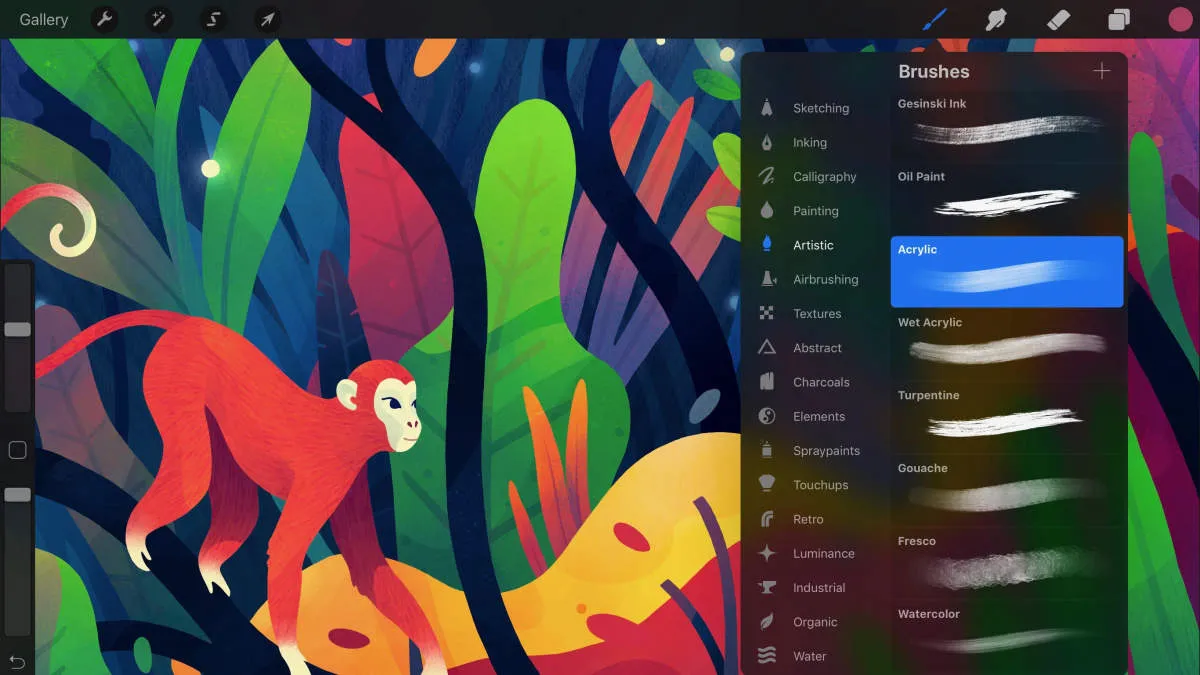
Procreate is a raster graphics editor app for digital painting developed and published by Savage Interactive for iOS and iPadOS. It is a powerful and intuitive app that offers a wide range of features for artists of all levels, from beginners to professionals.
Procreate is known for its user-friendly interface, its wide selection of brushes, and its powerful drawing and painting tools. The app also supports layers, masks, and other advanced features that give you complete control over your work.
Key features of Procreate:
- A wide variety of brushes and tools
- Support for layers and masks
- A powerful drawing and painting engine
- A user-friendly interface
- Affordable price
If you’re looking for a powerful and easy-to-use digital painting app, Procreate is a great option.
GIMP

GIMP (GNU Image Manipulation Program) is a free and open-source raster graphics editor used for image retouching and editing, free-form drawing, converting between different image formats, and more specialized tasks.
Key Features:
- A comprehensive set of tools for painting, drawing, and retouching
- Supports layers, masks, and various blending modes for advanced editing
- Offers a wide range of file format compatibility, including PSD (Photoshop) files
- Highly customizable interface with dockable dialogues and windows
- Active community and extensive documentation available online
Pros:
- Completely free to use, modify, and distribute
- Powerful features comparable to paid software
- Cross-platform compatibility (Windows, macOS, Linux)
- Extensible through plugins and scripts
Cons:
- Steeper learning curve compared to some user-friendly alternatives
- Can be resource-intensive on older hardware
- Limited CMYK support, which can be a drawback for print design
GIMP is an excellent choice for graphic designers on a budget or those seeking a powerful and flexible open-source solution.
ZBrush
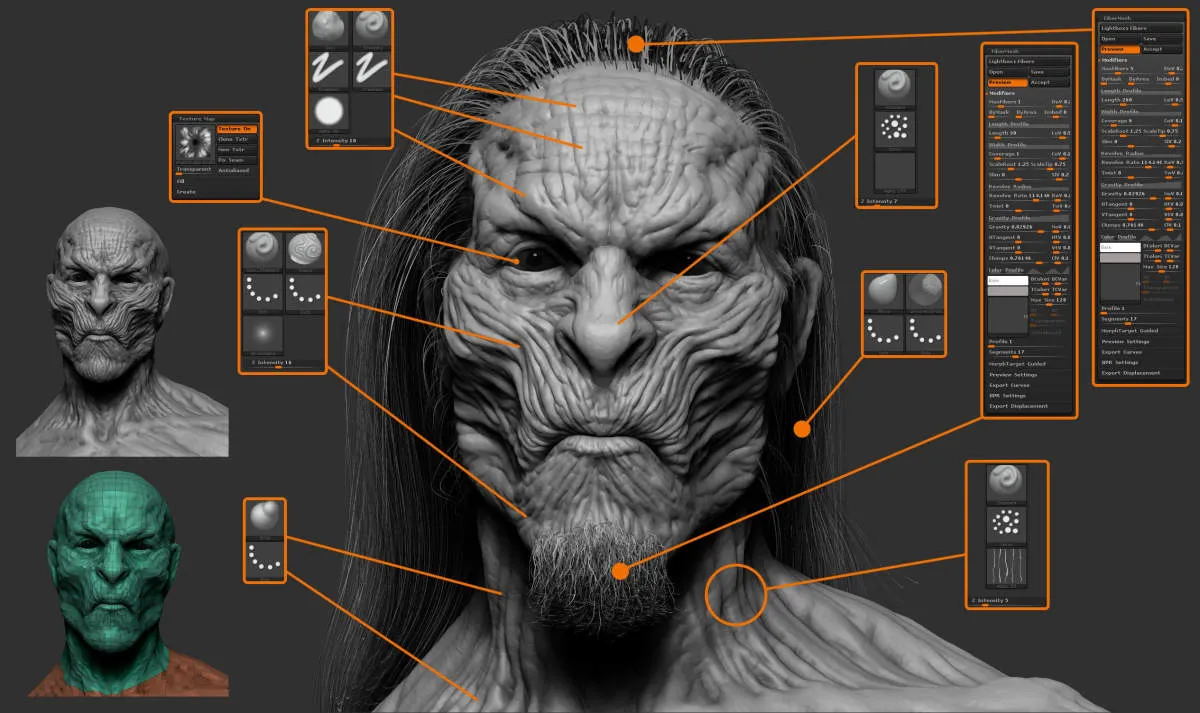
ZBrush is a digital sculpting and painting software that revolutionized the 3D industry with its powerful features and intuitive workflow. Widely used in the film, game, and collectibles industries, ZBrush is known for its ability to create highly detailed and realistic 3D models.
Unlike traditional modeling software that relies on polygons, ZBrush utilizes a technology called “pixols,” which store lighting, color, and depth information for each point on the surface. This allows artists to sculpt and paint on their models with incredible detail, mimicking real-world sculpting techniques.
Key Features of ZBrush:
- Dynamic Subdivision: Subdivide your model to add more detail as you sculpt.
- Brushes: A vast library of sculpting and painting brushes for various effects.
- ZRemesher: Quickly retopologize your high-resolution models for use in other software.
- Texturing and Painting: Comprehensive tools for creating realistic textures and polypainting.
- Rendering and Presentation: Powerful rendering engine for showcasing your work with realistic lighting and materials.
Why Choose ZBrush?
ZBrush is the go-to software for creating highly detailed characters, creatures, and organic models. Its intuitive sculpting tools and powerful features provide artists with unparalleled freedom and control over their digital creations. Whether you’re a seasoned professional or aspiring 3D artist, ZBrush offers a robust platform for bringing your artistic visions to life in stunning detail.
Clip Studio Paint
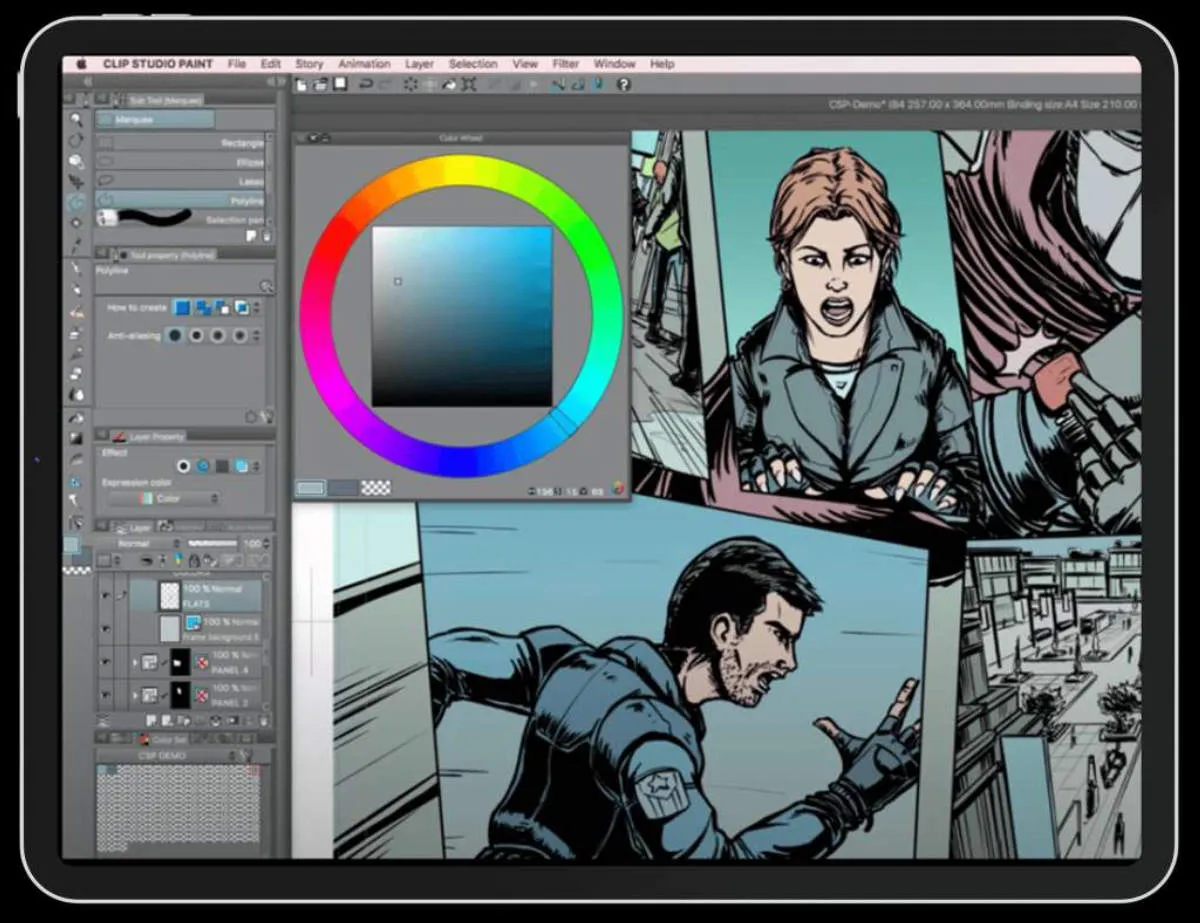
Clip Studio Paint is a powerful digital painting and illustration software favored by manga, comic book, and animation artists. Its extensive features cater specifically to these fields, although it has grown into a more well-rounded program for all kinds of digital art creation.
Pros:
- Exceptional drawing experience with customizable pen pressure sensitivity and stabilization
- Vast library of brushes, tones, and 3D models specifically designed for comics and manga
- Powerful paneling and page layout tools ideal for comic book creation
- Advanced animation features for creating smooth and dynamic animations
- Affordable subscription options compared to some competitors
Cons:
- Steep learning curve for beginners due to its extensive features
- Interface can feel cluttered compared to more minimalist design programs
- Limited text tools compared to dedicated graphic design software
Clip Studio Paint is an excellent choice for artists focused on comics, manga, and illustration who desire powerful drawing and animation features. While it might not be the best option for general graphic design tasks, its niche functionalities make it a top contender for its target audience.
Adobe InDesign
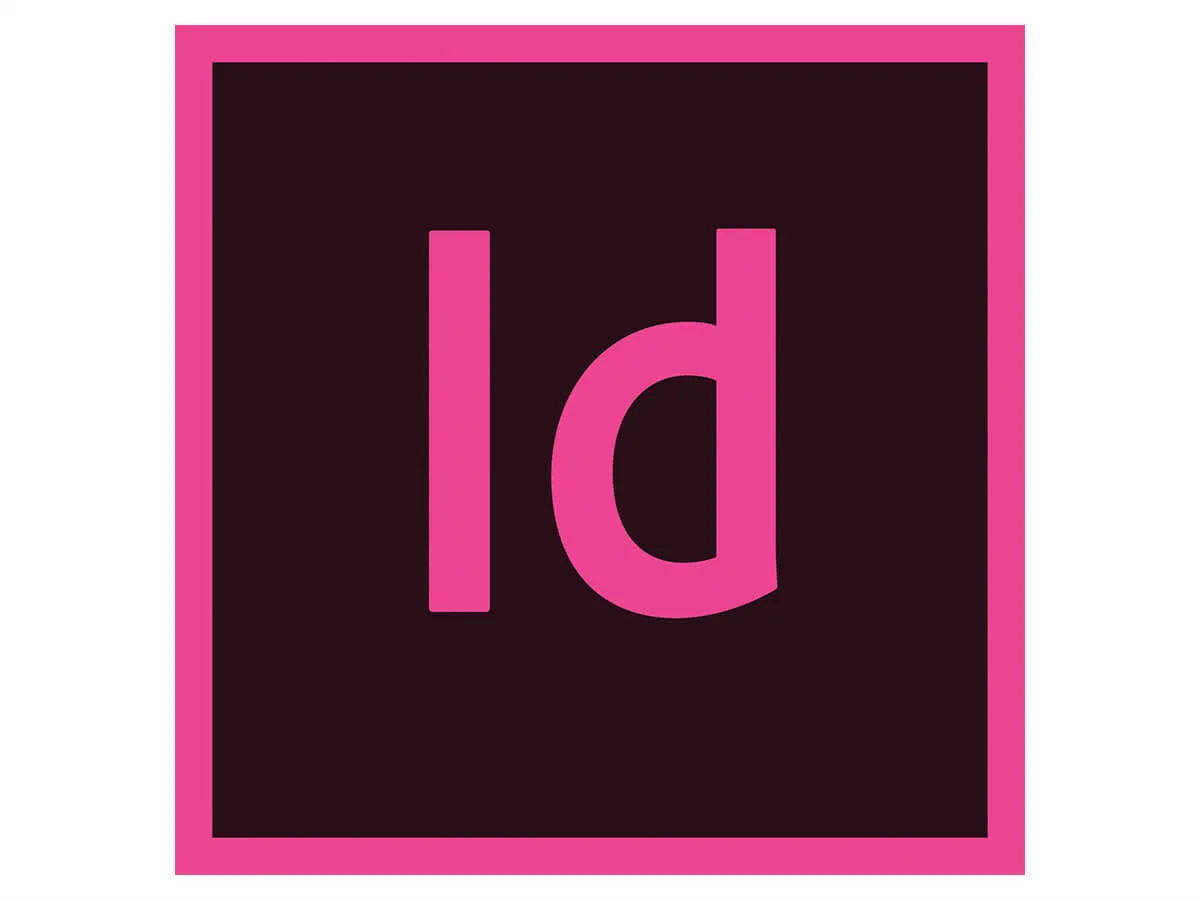
When it comes to professional page layout and typesetting, Adobe InDesign reigns supreme. This industry-standard software is a must-have for any designer working on magazines, brochures, books, posters, and other print-focused projects.
Key Features:
- Precise control over typography, including leading, kerning, and tracking.
- Advanced page layout tools for creating multi-column grids, master pages, and interactive documents.
- Seamless integration with other Adobe Creative Cloud applications like Photoshop and Illustrator.
- Professional output options for print, including support for various color models and file formats.
- Interactive features for creating digital publications, including buttons, hyperlinks, and animations.
Pros:
- Industry-standard software with unparalleled features for print design.
- Steep learning curve, but offers powerful tools for professional results.
- Excellent typography control and layout flexibility.
- Seamless integration with other Adobe products.
Cons:
- Subscription-based pricing model may not be suitable for all users.
- Can be overwhelming for beginners due to its extensive features.
Conclusion
Choosing the right graphic design software is crucial for professional creatives. The top 10 software options provide versatile tools and features to enhance your designs and workflow.

